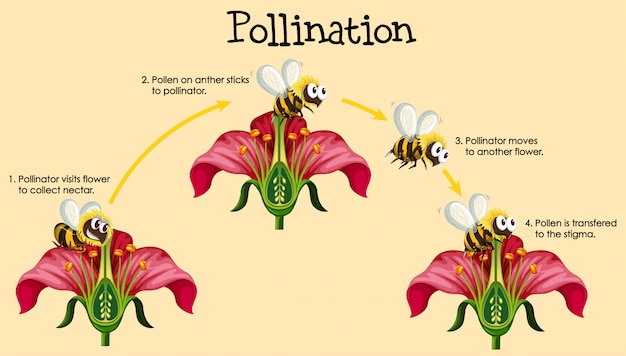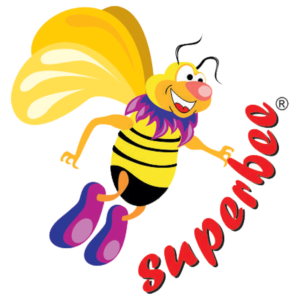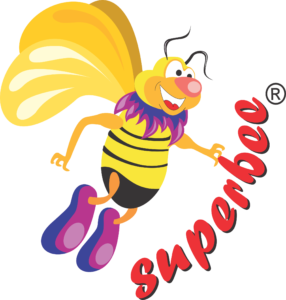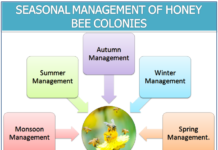Honeybee Castes and their work Information :
Every honeybee colony is a family and each colony contains three adult castes: egg-laying queens, sperm-producing male drones and non reproductive female workers.
There is normally only one queen in each colony,she is recognised by her long and slender
abdomen. The queen lays one egg in each cell and may produce up to 2500 eggs per day during the high season. The bee larva hatches from an egg, grows and then becomes a pupa in the cell.

Female honeybees are developed from fertilized eggs. The drones (that are males) are developed from un-fertilized eggs. They usually take 24 days to develop. The bigger cells made during swarming season at the lower end of the frame are drone cells.

Worker bees are the most copious members of the colony. A healthy colony may have thousands of worker bees or more during growth. There primary function is to build and maintain the comb, collecting necessities for the colony and care for the brood. They build the comb from wax secreted from glands in their abdomen. In the bee colony all worker bees are sterile females.

Drones are stingless male honeybees. They are, defenceless, and fed by worker bees as they are unable to feed themselves. They have no pollen baskets or wax glands and cannot secrete royal jelly. The drones only serve for reproduction purpose, they mate with a virgin queen and then they die.

What is swarming ?
The honeybee colony multiplies through swarming. Swarming is a natural process in the life of a honey bee colony and Swarming is essential to the bees’ survival. If the bees becomes overcrowded in beehive. usually in season having availability of ample nectar and pollen. The old queen leaves the hive together with half of the bees in the colony. To create a swarm, an old honey bee queen leaves the hive with about half of the hive’s worker bees, while a new queen remains in the old hive with the rest of the workers. A honey bee swarm may contain hundreds or thousands of worker bees and a single queen. Swarming honey bees fly temporarily, and then cluster on shrubs and tree branches.

Pollination by Honey Bees
Honey bees are good pollinators for many reasons. Their hairy bodies trap pollen and carry it between flowers. The bees require large quantities of nectar and pollen to rear their young, and they visit flowers regularly in large numbers to obtain
these foods. In doing so, they concentrate on one species of plant at a time and serve as good pollinators for this reason. Their body size enables them to pollinate flowers of many different shapes and sizes. Through the pollination of flowering crops the honeybees are regarded as highly valuable for all living beings.













